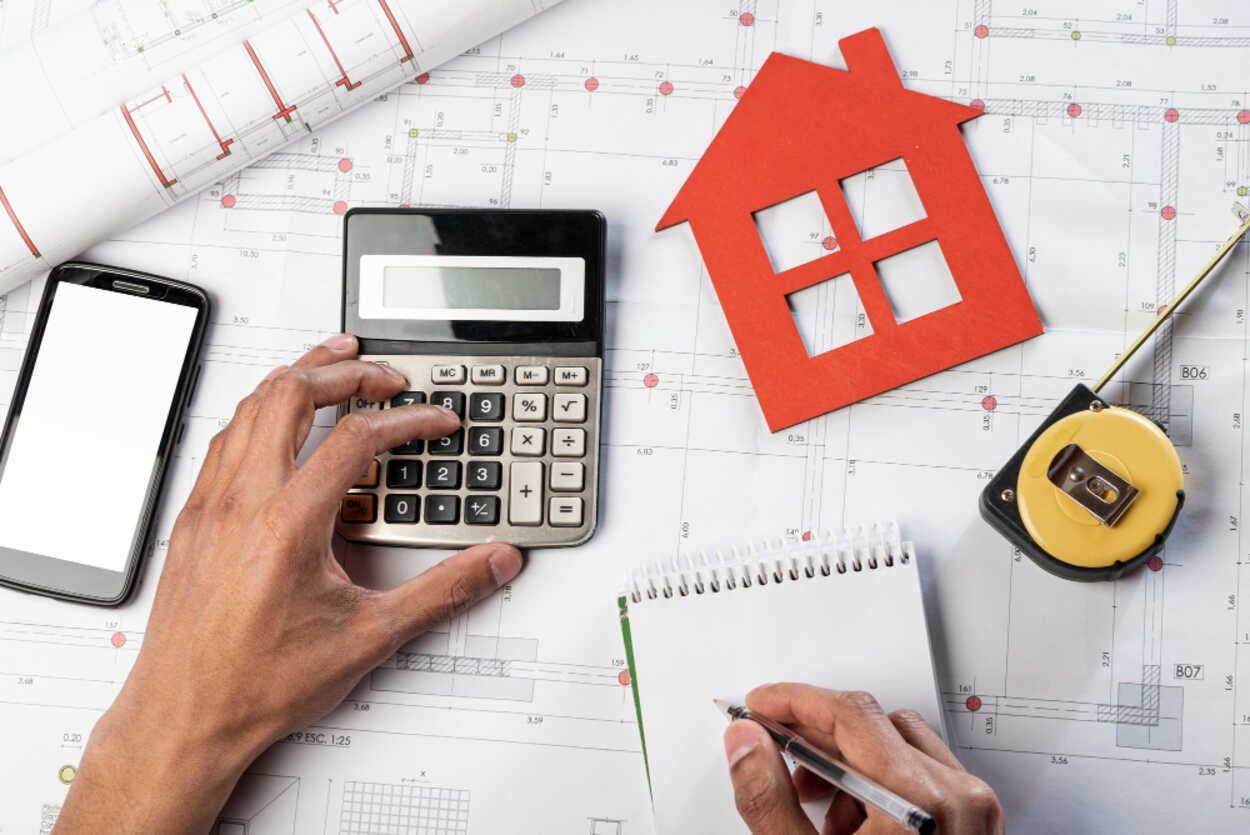Real Estate
Rent-To-Own Homes – Tips for Finding the Right Property
People who want to reside in a certain community but need more money saved up for a down payment may find rent-to-own houses a nice alternative. They can also provide credit-challenged consumers time to improve their scores before becoming eligible for a mortgage.
However, there are certain things you should know about these agreements before moving into one. Read on to learn our top tips for finding the right property.
Location
Rent-to-own homes usually offer a portion of your monthly lease payments to apply toward the final purchase price. This gives you more time to save for a down payment, repair your credit and improve your debt-to-income ratio before officially applying for a mortgage.
People who would struggle to qualify for a mortgage owing to a lack of money or poor credit ratings have a road to homeownership thanks to rent-to-own programs. You may seek expert guidance at businesses like Lang Estates – eXp Realty. These programs may be challenging and need customers to approach them with the same attentiveness as a conventional house purchase.
However, you should perform due diligence and ensure that the purchase price agreed upon at the beginning of your lease will be affordable. This includes obtaining an independent appraisal, conducting a title search, and ensuring current taxes. You can do these things independently or hire a broker specializing in rent-to-own homes. They may have connections with local landlords and can find you a suitable home quickly.
Down Payment
Purchasing a home is a big decision, and a rent-to-own agreement is no exception. Many rent-to-own contracts require you to pay upfront fees (called option fees) that are applied toward the final purchase price of the property at the end of your lease. These fees are often nonrefundable, so you should be certain you want to buy the property before paying these additional expenses at the end of your lease.
Many rent to own programs name the home purchase price upfront, but this can be problematic if you don’t qualify for a mortgage at the end of your lease or if home values fall. Review the contract carefully and consult a real estate lawyer before moving into a rent-to-own home.
Rent-to-own programs give people who have trouble qualifying for a traditional mortgage the opportunity to move into homes they may not otherwise be able to afford. However, it is important to weigh the pros and cons of this arrangement carefully and ensure you can qualify for a mortgage at the end of the lease period by working to improve your financial situation.
Options
In a weak real estate market, it might be difficult for homeowners to sell their houses entirely. One answer is to provide a rent-to-own house option. This enables the owner to collect rent higher than the market rate and an option premium that, after the lease period, will be applied as a down payment on the cost of the home.
However, there are risks to this type of agreement. First, the tenant may change their mind and not exercise the purchase option at the end of the lease term. Second, the seller may need help finding a buyer for the property, resulting in losing the option and rent credit payments.
For these reasons, treating a rent-to-own home with the same level of caution as a traditional purchase is important. A home inspection, a review of the title, and an appraisal of the property are all essential before signing an agreement.
Timeline
Depending on the rent-to-own contract you sign, it may be necessary to perform certain due diligence before moving in. This includes requesting an independent appraisal, a home inspection, and ensuring property taxes are current and there are no liens on the property.
Most people want to be homeowners, but a lack of savings or credit scores can make traditional mortgages challenging to qualify for. Rent-to-own homes offer an alternative route to homeownership by combining a standard lease agreement with the option to buy.
This arrangement offers advantages for both the tenant and the seller. The tenant can test-drive the home for some time, building their credit while saving money towards a down payment. The seller can lock in a sale price and enjoy income from a high-quality tenant. However, it is important to remember that the seller still has much power in the transaction and can nullify the contract with something as small as missing a payment.
Real Estate
AY Realty Group Real Estate Agents in Denton, TX

Navigating the real estate market can be a daunting task, especially in a thriving area like Denton, Texas. However, with the right real estate agents by your side, it doesn’t have to be a stressful experience. AY Realty Group has quickly become the trusted choice for buying, selling, and renting homes in Denton, thanks to their expertise, local knowledge, and client-focused approach.
Whether you’re a first-time homebuyer, an investor looking for opportunities, or a family seeking the perfect home, this blog will provide insights into why partnering with AY Realty Group in Denton, TX is the best decision for your real estate needs.
Denton, TX Real Estate Market Overview
Before jumping into why AY Realty Group stands out, it’s important to understand the dynamic real estate market in Denton. Denton is one of North Texas’ most desirable locations, known for its vibrant vibe, strong economy, and top-rated schools.
Key Features of the Denton Real Estate Market:
- Highly Desirable Location: Positioned at the northern end of the Dallas-Fort Worth Metroplex, Denton offers a suburban feel with easy access to major city amenities.
- Booming Economy: Denton is home to two major universities—University of North Texas and Texas Woman’s University—fueling a solid housing demand.
- Variety of Real Estate Options: From modern apartments to traditional single-family homes, Denton offers diverse housing opportunities.
Now that you have an idea of why Denton is attracting potential homebuyers, here’s an in-depth look at what makes AY Realty Group uniquely qualified to help you succeed in this competitive real estate market.
Why Choose AY Realty Group in Denton, TX?
1. Local Expertise
AY Realty Group boasts a team of seasoned real estate professionals with deep roots in Denton. Their intimate understanding of local neighborhoods, market trends, and upcoming developments ensures that you’re always a step ahead in finding your dream home or investment property.
Example: If you’re interested in Denton’s historic neighborhoods, like Downtown Denton or the vibrant Hickory Street District, AY Realty Group can guide you to properties that match your lifestyle and budget.
2. Tailored Services
One size doesn’t fit all in real estate, and AY Realty Group understands that. They offer customized services based on your unique needs. Whether you’re:
- Looking for a large home in a family-friendly neighborhood like Southridge,
- Interested in college housing near UNT or TWU, or
- Hoping to expand your rental property portfolio,
AY Realty Group creates personalized plans to match your goals.
3. Comprehensive Buying and Selling Support
The AY Realty Group team is with you at every step, offering full-service real estate solutions that go beyond simply showing homes. Here’s the support you can expect:
- For Buyers: From securing pre-approvals to negotiating offers, they simplify the buying process.
- For Sellers: Their marketing strategies are tailored to highlight your property’s best features, ensuring it sells quickly and for top dollar.
4. Skilled Real Estate Negotiators
Negotiation is one of the most critical aspects of real estate transactions, and AY Realty Group excels in this. The team’s expertise has saved clients thousands of dollars and helped them secure the most favorable terms, whether buying or selling.
Pro Tip from AY Realty Group Experts:
Preparing a comprehensive market analysis and understanding Denton’s competition can significantly strengthen your negotiation power. That’s where our agents shine.
5. A Commitment to Customer Satisfaction
Beyond their industry knowledge, AYRealtyGroup takes pride in fostering genuine, long-lasting relationships with their clients. Their glowing reviews speak volumes about their dedication to ensuring each client feels valued and informed throughout the process.
Client Success Story:
“Working with AY Realty Group was the best decision we made. They helped us find our family’s dream home in North Denton, negotiated an incredible deal, and made the entire process seamless!” – Julie S., Denton, TX.
6. Investment Opportunities for Real Estate Investors
Denton continues to attract investors thanks to its growing rental market, driven by its expanding student population and job opportunities. AY Realty Group provides expert guidance on identifying high-yield properties, analyzing ROI potential, and building profitable real estate portfolios.
If you’re eyeing Denton’s rental market, AY Realty Group ensures your investment path is clear and secure.
Popular Neighborhoods in Denton to Explore
If you’re considering buying property in Denton, AY Realty Group can introduce you to some of the most sought-after neighborhoods, including:
- Downtown Denton
Charming historic homes, trendy restaurants, and the iconic Denton Square make this area vibrant and unique.
- Hickory Creek
For those longing for proximity to nature, Hickory Creek offers spacious homes near scenic parks and Lake Lewisville.
- Robson Ranch
A gated retirement community with resort-style amenities, perfect for retirees looking for a comfortable and active lifestyle.
- Southridge
Known for its spacious lots, tree-lined streets, and excellent schools, Southridge is ideal for families.
How AY Realty Group Makes the Process Easier
Buying or selling a home can often feel overwhelming. AY Realty Group’s innovative tools help simplify the process by empowering clients with:
- Property Alerts: Get real-time alerts for new listings that match your preferences.
- Virtual Tours: Tour properties remotely from the comfort of your home.
- Market Insights: Stay updated with Denton’s market trends so you can make informed decisions.
Take Your First Step with AY Realty Group
Navigating the real estate market in Denton doesn’t have to be a challenge. With AY Realty Group, you gain access to industry-leading expertise, personalized solutions, and unwavering support. Whether you’re buying, selling, or investing, their team has the tools and knowledge to turn your goals into reality.
Real Estate
Effective Property Management in Marrakech Morocco

Marrakech, with its enchanting medina, bustling souks, and breathtaking architecture, has become a hotspot for global real estate investors and expats. But managing property in this beautiful city comes with its unique set of challenges and opportunities. Whether you’re a homeowner looking to rent out your property or an investor managing multiple assets, effective Property Management in Marrakech Morocco is key to protecting your investment and maximizing its returns.
This blog dives into everything you need to know about property management in Marrakech Morocco, from understanding local laws to finding reliable services and maintaining tenant satisfaction.
Why Marrakech is a Prime Spot for Property Investment
A Thriving Real Estate Market
Marrakech is one of Morocco’s most vibrant cities, drawing tourists and investors alike. The city’s unique mix of traditional Moroccan culture and modern luxury has driven demand for real estate, especially in areas like the Medina, Gueliz, and Hivernage. Properties ranging from traditional riads to high-end villas are highly sought after, offering lucrative rental opportunities for those who invest wisely.
Booming Tourism Drives Rental Demand
Tourism is the lifeline of Marrakech’s economy. With millions of visitors arriving annually, the demand for short-term rentals like vacation homes and boutique riads has surged. Owning a well-maintained property in a prime location can generate consistent income, making property management in Marrakech not just important but essential to sustaining that income stream over the long term.
Attractive ROI
Low property taxes, affordable labor for maintenance, and competitive investment costs make Marrakech an attractive choice for foreign buyers. When managed well, properties in the city can yield impressive returns on investment. Of course, success hinges on an effective property management strategy to keep things running smoothly.
Key Challenges in Property Management in Marrakech Morocco
While property ownership in Marrakech is undeniably alluring, it does come with challenges. Understanding these can help you prepare adequately or identify the right estate management professionals to support you.
Understanding Local Property Laws
Moroccan real estate laws differ significantly from those in Western markets. Land ownership, rental agreements, and tenant rights are areas of complexity, requiring a detailed understanding of local regulations. For example, landlords must adhere to specific rules concerning notice periods and evictions, both of which can differ depending on the type of lease.
Finding Reliable Property Services
Maintenance and repairs are crucial to keeping a property in good condition. However, finding reliable contractors or services can be a hurdle, especially if you’re an overseas owner. From plumbing issues to electrical repairs, ensuring a trusted and timely response is sometimes easier said than done.
Diverse Tenant Profiles
With a mix of tourists, expats, and locals renting properties, landlords need to cater to a wide range of expectations. Striking the balance between guest satisfaction and profitability can be tricky, especially with vacation homes.
Seasonal Rental Fluctuations
The rental market in Marrakech can be highly seasonal, particularly for short-term rentals. Peak tourism season means higher rental rates, while low season may result in vacancies. Managing cash flow and pricing is critical to ensuring your property remains profitable throughout the year.
Essential Tips for Property Management in Marrakech
To mitigate challenges and run a successful property, follow these guidelines.
1. Hire a Local Property Management Company
One of the smartest moves you can make as a property owner is to hire a reputable property management company based in Marrakech. These companies specialize in local regulations, maintenance services, tenant management, and ensuring your property meets high standards for guests. They are indispensable for overseas property owners who can’t handle daily management tasks themselves.
Key Benefits:
- Handling guest check-ins and check-outs
- Housekeeping and repairs
- Time-sensitive support
- Expertise in local rental laws
2. Prioritize Maintenance and Upkeep
Marrakech’s climate can impact the condition of your property. Heat and dust can wear down your interiors and exteriors over time. Conduct regular inspections to identify necessary repairs and prevent costly damage. Depend on professional landscapers, cleaners, and pest control services to keep your property looking pristine.
3. Optimize Listings for Short-Term Rentals
If you’re targeting short-term vacation rentals, websites like Airbnb or Booking.com are essential platforms for reaching tourists. Create an appealing property listing with professional photos and detailed descriptions. Highlight your property’s proximity to famous attractions (such as Jemaa el-Fna), amenities, and features like a pool or terrace with mountain views.
4. Understand Moroccan Pricing Trends
Research similar properties in your area and adjust your rates based on location, size, and amenities. Keep track of high and low seasons, setting competitive prices that align with demand. This will ensure your property remains attractive to prospective tenants.
5. Build Strong Relationships with Tenants
Satisfied tenants are more likely to become repeat customers or refer your property to others. Whether you’re letting a riad on a long-term lease or renting out a villa for a weekend, focus on providing exceptional service. For vacation rentals, offering touches like welcome baskets or local guidebooks can leave a great impression.
6. Stay Compliant with Taxes
Rental income is subject to Moroccan taxation. Ensure that you declare your earnings and comply with local tax obligations to avoid complications. A professional property management company or accountant can guide you through this process, keeping your financials in order.
Joining the Community of Property Owners
Marrakech isn’t just a great place to invest; it’s also home to a thriving community of property owners and managers who understand the city’s unique challenges and opportunities. Joining forums or attending local meetups can help you refine your strategies, find trusted professionals, and stay informed about changes in the city’s property landscape.
Additionally, online platforms that cater to Moroccan property owners often share advice on operational best practices, legal updates, and investment trends.
Why Expert Property Management Matters
The difference between a costly mistake and a long-term success often lies in effective property management. Whether you’re new to owning property in Marrakech or trying to scale your investments, professional help can make all the difference. With the right partner, you can enjoy the profits and satisfaction of owning property while leaving the nitty-gritty challenges in good hands.
Take the Next Step Toward Hassle-Free Property Management
Marrakech offers exceptional opportunities for property owners—but seizing these opportunities requires expert management. Don’t leave your investment to chance. Partner with a property management expert who can handle everything from maintenance to tenant relationships, ensuring maximum returns with minimal stress.
If you’re looking for personalized property management solutions tailored to Marrakech, contact our team today. We’ll keep your property in excellent condition, handle the details, and help your investment thrive in this beautiful and dynamic city.
Real Estate
Explore New Real Estate Programs in Marrakech

This blog will guide you through some of the latest real estate projects in Marrakech, highlight their key features, and explain why now might be the perfect time to invest.
Why Invest in Marrakech Real Estate?
Marrakech, fondly known as the “Red City,” is a vibrant metropolis that blends history with modernity. It’s famous for its rich cultural heritage, bustling souks, and picturesque landscapes. From the iconic Jardin Majorelle to the bustling Jemaa el-Fnaa square, Marrakech attracts tourists and property seekers from all over the world.
Real estate in Marrakech offers a unique combination of affordability and long-term value. Here are some reasons why investing in Marrakech’s properties could be a smart move for you:
- Booming Tourism Industry: With millions of visitors every year, there’s growing demand for rental properties in key areas.
- Rising Development: Various new, expertly-planned real estate programs cater to both local and international buyers.
- High Return on Investment (ROI): Marrakech remains an attractive destination for short-term rentals, with appealing returns for property investors.
- Quality of Life: With its mild climate, cultural richness, and modern amenities, it’s an ideal location for families, retirees, and young professionals alike.
Top New Real Estate Programs in Marrakech
The latest real estate developments in Marrakech are designed to cater to modern lifestyles while preserving the city’s unique aesthetics. Here are a few noteworthy programs to consider:
1. Palm Gardens Residential Program
Located near the Palmeraie district, this new residential program offers serenity and elegance combined with modern architecture.
Key Features
- Spacious 2- to 4-bedroom apartments and luxury villas
- Gated community with 24/7 security
- Landscaped gardens and swimming pools
- Close proximity to golf courses and leisure centers
Whether you’re raising a family or investing in a vacation home, Palm Gardens offers a carefully curated mix of exclusivity and comfort.
2. Majestic City Center Apartments
Tucked in the heart of Marrakech, the Majestic City Center Apartments provide urban convenience with a touch of luxury.
Key Features
- Modern 1- and 3-bedroom apartments ideal for professionals
- Underground parking and high-speed elevators
- Rooftop terrace for social gatherings and relaxation
- Walking distance to business districts, restaurants, and shopping malls
This program suits buyers looking for a modern, low-maintenance lifestyle within the bustling energy of Marrakech’s city life.
3. Atlas View Villas
Located on the outskirts of Marrakech, Atlas View Villas offer unparalleled mountain vistas and spacious living spaces for those who appreciate privacy and luxury.
Key Features
- Exclusive 4- to 6-bedroom villas with private pools
- Contemporary Moroccan architecture blended with European designs
- Expansive gardens and outdoor entertainment spaces
- Hiking trails and easy access to the Atlas Mountains
This project is perfect for families and expatriates seeking a serene retreat while staying connected to the city.
4. Eco-Living Residences
For those seeking sustainability, look no further than Eco-Living Residences. This development is Marrakech’s answer to contemporary, environmentally-conscious living.
Key Features
- Energy-efficient and eco-certified building designs
- Solar panels and water-conservation systems
- Community-centric living with parks and playgrounds
- Studio to 3-bedroom units at competitive prices
Eco-Living Residences aims to create a better future without compromising on style or comfort.
Tips for Choosing the Right Real Estate Program
1. Define Your Purpose
Are you buying for personal use, as a rental investment, or for future resale value? Properties in tourist-heavy areas like the Medina may suit rental investors, while gated communities in the suburbs might be better for families.
2. Understand Your Budget
Affordability is crucial. Consider not only the property cost but additional fees like property taxes, maintenance costs, and legal expenses.
3. Location Matters
Whether near city landmarks, tranquil gardens, or mountain views, location not only impacts your living experience but also determines your property’s long-term value.
4. Research the Developer
Choose properties developed by reputable companies with a history of delivering on quality and timelines.
5. Financing Options
If you require financing, make sure the developer or your bank provides competitive mortgage rates or installment plans that suit your budget.
6. Seek Professional Advice
A local real estate agent or consultant can provide valuable insights about Marrakech’s property market, ensuring you make an informed decision.
How Does Investing in Marrakech Real Estate Benefit You?
Not only does Marrakech provide a unique cultural backdrop for living, but its real estate market is also becoming a hotspot for high-net-worth individuals and savvy investors. Here’s what sets it apart:
- Affordability compared to European cities, making it accessible for buyers worldwide.
- Tax Benefits due to Morocco’s real estate-friendly policies for international buyers.
- Global Demand as Marrakech continues to attract global citizens and tourists alike.
Start Your Journey to a New Home
The new real estate programs in Marrakech are shaping the future of housing in the city, combining tradition with modernity to create seamless living experiences. Whether you’re searching for your next family home or an investment opportunity, there’s never been a better time to explore these options.
Need help narrowing down your choices? Reach out to our trusted real estate professionals for personalized advice on finding the perfect fit for your needs and goals.
-

 Business3 months ago
Business3 months agoWhat to Know Before You Start a Business?
-

 Travel2 months ago
Travel2 months agoSave on Campervan Rentals with a roadsurfer Gutscheincode
-

 Travel2 months ago
Travel2 months ago10 Things to Do in Punta Mita
-

 Travel2 months ago
Travel2 months agoBest Things to Do in New York City – Ultimate Travel Guide
-

 Real Estate2 months ago
Real Estate2 months agoHow to Be the Best Real Estate Agent Murfreesboro
-

 Real Estate2 months ago
Real Estate2 months agoFind the Best Real Estate Agents Main Line
-

 Real Estate1 month ago
Real Estate1 month agoExplore New Real Estate Programs in Marrakech
-

 Health2 months ago
Health2 months agoGuide to Buying Testosterone Propionate Safely and Effectively





















